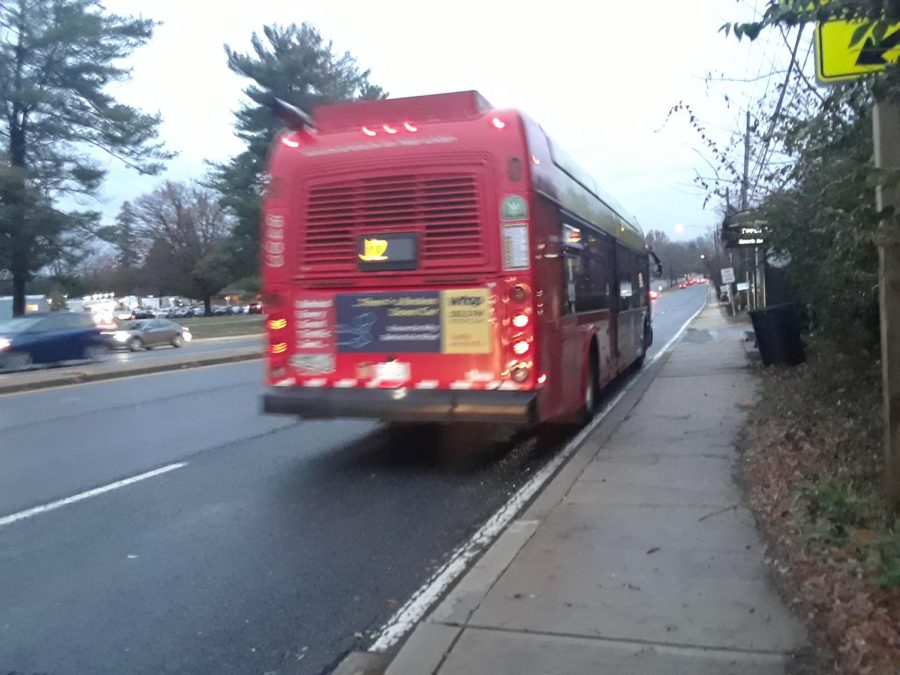MoCo rapid bus transit plans: A forward thinking mode of transportation
A local bus leaves a shelter along Old Georgetown Road. Buses such as this are plagued by traffic delays, a problem which would be alleviated by dedicated bus lanes.
November 30, 2018
The Silver Spring area, has seen the start of construction on Montgomery County’s first Bus Rapid Transit (BRT) line this past month. Beginning at the Silver Spring station on Metro’s Red Line, the BRT line will run along Route 29 until the Montgomery-Howard County line. This system, when opened in 2020, constitutes the first phase of a countywide plan first proposed in 2013.
Bus Rapid Transit, while a generally vague term, allows for improved transport at little cost – estimated at $31.5 million for the Route 29 corridor, according to the Washington Post. Whereas regular bus service is subject to the vagaries of traffic conditions, with buses moving at very slow speeds and stopping at every light. As a result, buses come infrequently, something about which anyone who has sat at a bus stop for a phantom bus can attest. Often, when buses do arrive, they come in clumps – such that one bus is overcrowded, and the next, which come only a few seconds after, is empty, in a phenomenon known as bus bunching. Theoretically, BRT should prevent many of these flaws, as it provides for dedicated lanes, transit priority at traffic lights and limited stops with large bus shelters and bus tracking screens.
The decision to begin construction on the county’s first BRT line is commendable. Montgomery County is rapidly becoming a semi-urban area. The built-up cores of Bethesda and Silver Spring will only continue to grow in the foreseeable future, especially once the light rail Purple Line opens in 2022. Moreover, the Wisconsin Avenue/Rockville Pike corridor is densifying, as evidenced by the development in the area of the White Flint Metro station. Given this rapid and proliferating growth, any policy that places a primary influence on car travel is deeply misguided and dangerous.
Montgomery County should continue this policy of transit expansion. A network of bus lanes along Rockville Pike and Route 29 would allow for more sustainable and livable development. BRT should foster a more pedestrian-friendly streetscape, and encourage pedestrian and transit travel, all of which contribute to a higher quality of life. Combined with the under-construction Purple Line light rail, these transit proposals should allow Montgomery County to become a national example of modern suburban development, one which the rest of the country should emulate.




















































